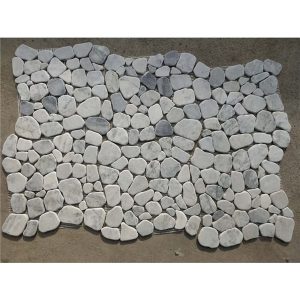Introduction:
In the world of landscaping and interior design, there is a growing fascination with using natural elements to create stunning and sustainable environments. Among these elements, cultured river rock stands out as a versatile and attractive option that can enhance the aesthetic appeal of any space. In this article, we will delve into the world of cultured river rock, exploring its origins, characteristics, uses, and the numerous benefits it offers to designers, homeowners, and nature enthusiasts alike.
Origins of Cultured River Rock:
Cultured river rock is a man-made product designed to replicate the appearance and texture of natural river rocks. These rocks are typically made from a combination of cement, aggregates, and coloring agents that are molded and shaped to resemble the smooth, rounded shapes of rocks found in riverbeds. The process of creating cultured river rock involves carefully selecting materials that can mimic the look and feel of natural stones, while also ensuring durability and longevity.
Characteristics of Cultured River Rock:
Cultured river rock is known for its unique characteristics that make it a popular choice for various landscaping and design applications. https://www.fs-slate.com/step-stone/ of cultured river rock include:
1. Variety of Sizes and Shapes: Cultured river rock is available in a wide range of sizes and shapes, allowing designers to create custom arrangements and patterns to suit their specific needs and preferences.
2. Natural Appearance: The texture and color of cultured river rock closely resemble that of natural river rocks, giving it an authentic and organic look that enhances the overall aesthetic of a space.
3. Lightweight: Unlike natural river rocks, which can be heavy and difficult to transport and install, cultured river rock is lightweight and easy to work with, making it an ideal choice for both indoor and outdoor projects.
4. Durability: Cultured river rock is designed to withstand the elements and maintain its appearance over time, making it a long-lasting and cost-effective option for landscaping and design projects.
5. Eco-Friendly: Cultured river rock is a sustainable alternative to natural stone, as it reduces the need for quarrying and mining operations that can have negative environmental impacts.
Uses of Cultured River Rock:
Cultured river rock can be used in a variety of ways to enhance the beauty and functionality of different spaces. Some common uses of cultured river rock include:
1. Landscaping: Cultured river rock is often used in landscaping projects to create pathways, borders, and decorative accents in gardens, yards, and outdoor living areas. Its natural appearance and durability make it a popular choice for adding texture and visual interest to outdoor spaces.
2. Water Features: Cultured river rock is commonly used in the construction of water features such as ponds, waterfalls, and fountains. Its smooth surface and natural coloration create a serene and naturalistic look that enhances the beauty of these elements.
3. Interior Design: Cultured river rock can also be incorporated into interior design projects to add a touch of nature and sophistication to indoor spaces. From accent walls to fireplace surrounds, cultured river rock can bring a sense of warmth and texture to living rooms, bedrooms, and other areas of the home.
4. Commercial Spaces: Cultured river rock is a popular choice for commercial properties such as hotels, restaurants, and retail stores, where its aesthetic appeal and durability make it a practical and stylish option for enhancing the overall design of the space.
Benefits of Cultured River Rock:
The use of cultured river rock offers a wide range of benefits for designers, homeowners, and nature enthusiasts. Some key benefits of using cultured river rock include:
1. Versatility: Cultured river rock can be used in a variety of applications, from landscaping to interior design, making it a versatile and adaptable material for different projects.
2. Low Maintenance: Cultured river rock requires minimal maintenance compared to natural stone, as it does not need to be sealed or treated regularly to maintain its appearance.
3. Cost-Effective: Cultured river rock is often more affordable than natural stone, making it a budget-friendly option for those looking to achieve a high-end look without breaking the bank.
4. Customization: Cultured river rock can be customized in terms of size, shape, and color to suit the specific needs and preferences of the designer or homeowner, allowing for endless design possibilities.
5. Sustainable: Cultured river rock is an eco-friendly alternative to natural stone, as it reduces the demand for quarrying and mining operations that can harm the environment.

Conclusion:
Cultured river rock is a versatile and attractive material that offers numerous benefits for designers, homeowners, and nature enthusiasts alike. With its natural appearance, durability, and sustainability, cultured river rock has become a popular choice for landscaping, interior design, and commercial projects. Whether used to create pathways in a garden, accent walls in a living room, or water features in a commercial space, cultured river rock adds a touch of nature and sophistication to any environment. By exploring the beauty and benefits of cultured river rock, we can appreciate the unique qualities that make this material a valuable addition to the world of design and architecture.
